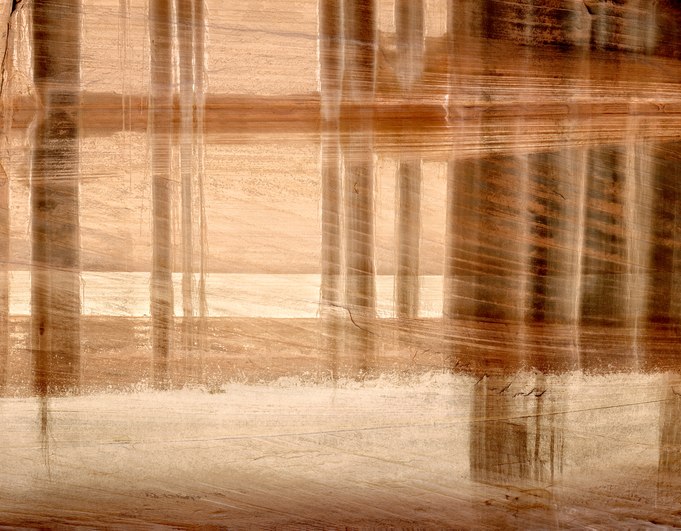Walking along a trail to Buckskin Gulch, the desert landscape opened into a stretch of grasses, sagebrush, sand, and rocks; then, sloped hills rose around me, composed of splintered sandstone that narrowed into a small path between overhanging bluffs. Finally, I entered an amphitheater at the trail’s intersection with Buckskin Gulch. To my right, a wall displayed desert bighorn sheep petroglyphs around a long curving line chipped into the smooth sandstone, probably incised to depict the gulch’s winding streambed.
My journey was an underground adventure along the narrow base of a deep fracture in the earth. As I ventured deeper into the slot canyon, the walls closed in around me, creating a beautiful yet phobic space that one hiker aptly described as causing “a mild but pervasive sense of anxiety.” At the entrance of this subterranean world, I photographed a muraled rock face of salmon- and yellow-stained sandstone, illuminated by reflected sunlight.
The cross-bedded patterns in the wall revealed the effects of shifting winds that once carried ancient sand into dunes that eventually hardened into stone. The vertical streaks were desert varnish, formed by rainwater and snowmelt running down its surface, depositing thin layers of manganese and iron that tinted the wall in translucent shades of red, brown, and black. Flash floods periodically sweep through the canyon, carrying sand, clay, stones, and tree trunks. The debris level from the last flood was marked by mud splatter, as shown at the bottom of this photograph.

